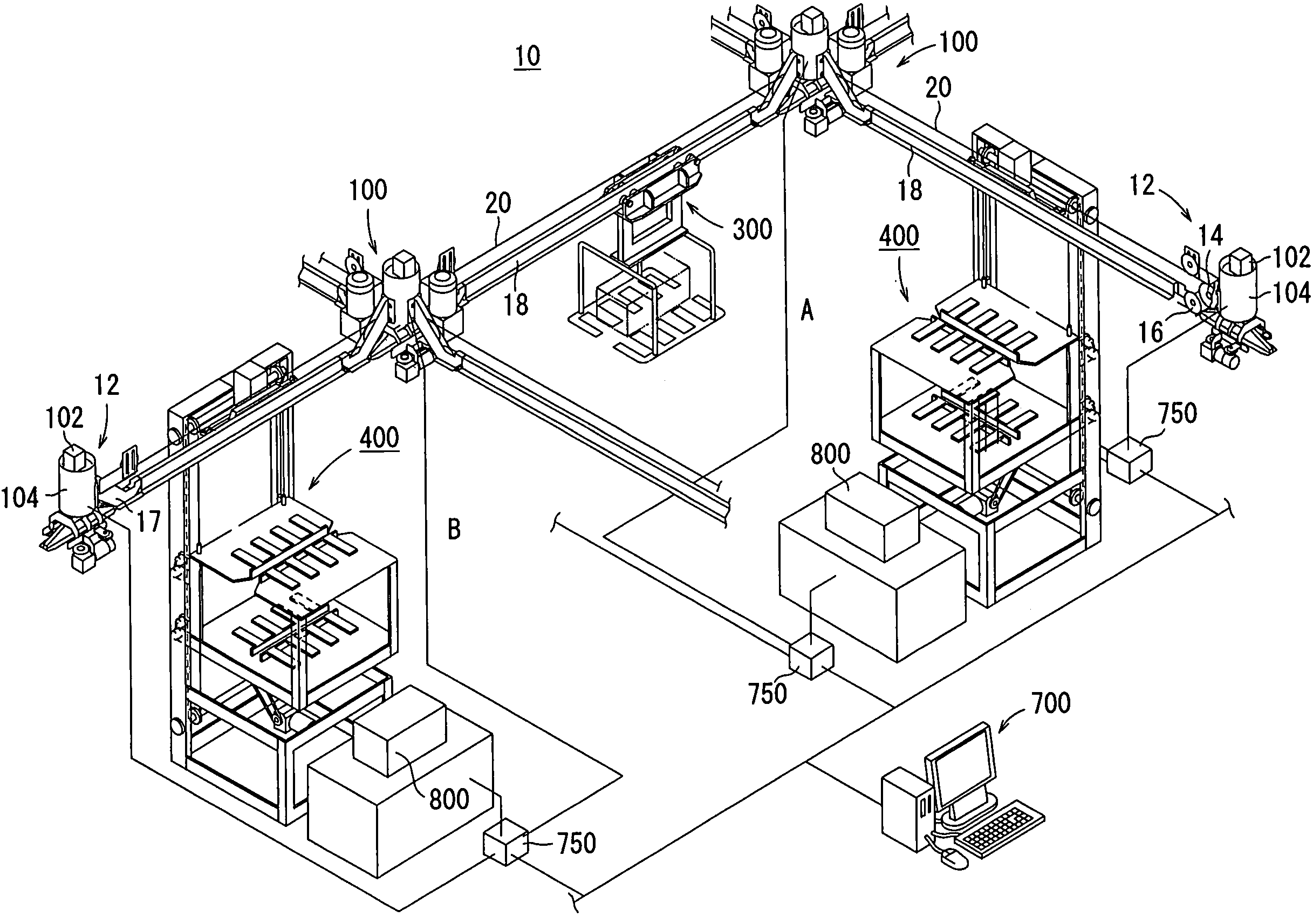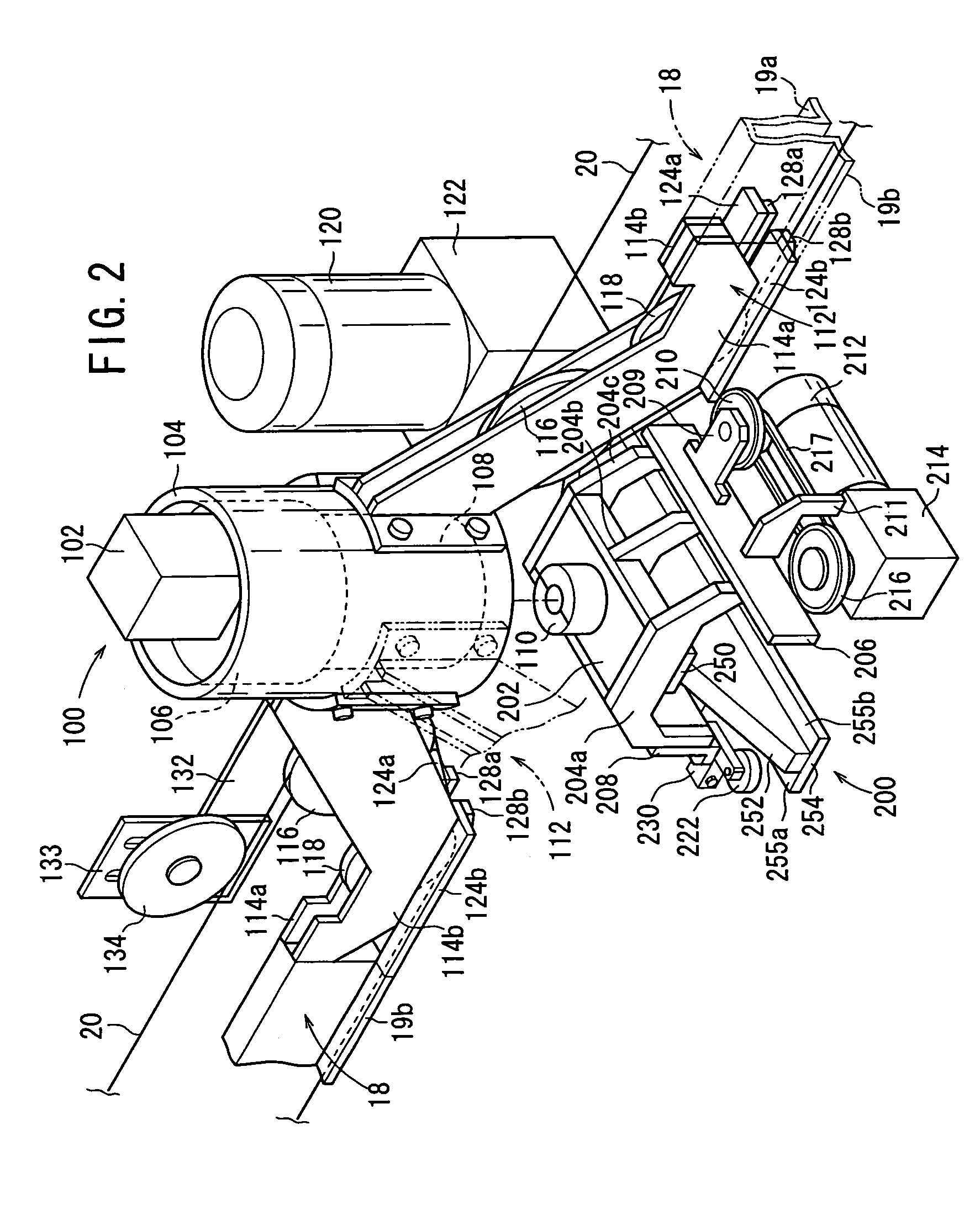Workpiece feeding apparatus
a feeding apparatus and workpiece technology, applied in conveyors, rope railways, ways, etc., can solve the problems of limited movement direction of hangers, low efficiency of conventional feeding apparatus for feeding workpieces, and difficulty in reaching working blocks, etc., to achieve simple mechanism for gripping wires, increase freedom of positioning transportation vehicles, and increase production efficiency
- Summary
- Abstract
- Description
- Claims
- Application Information
AI Technical Summary
Benefits of technology
Problems solved by technology
Method used
Image
Examples
Embodiment Construction
[0061]Workpiece feeding apparatus according to preferred embodiments of the present invention will be described in detail below with reference to the accompanying drawings.
[0062]As shown in FIG. 1, a workpiece feeding apparatus 10 according to an embodiment of the present invention is basically disposed in a production system that is made up of a plurality of working blocks arranged in a crisscross pattern. The production system comprises a mechanical production system in which a workpiece that has been processed in one working block is moved by the workpiece feeding apparatus 10 to another working block where the workpiece is processed. For illustrative purposes, it is assumed that the production system according to the present embodiment has a working block A and a working block B.
[0063]As shown in FIG. 1, the working block A and the working block B are basically coupled to each other by rails. The working block A and the working block B have respective end transportation mechanis...
PUM
 Login to View More
Login to View More Abstract
Description
Claims
Application Information
 Login to View More
Login to View More - R&D
- Intellectual Property
- Life Sciences
- Materials
- Tech Scout
- Unparalleled Data Quality
- Higher Quality Content
- 60% Fewer Hallucinations
Browse by: Latest US Patents, China's latest patents, Technical Efficacy Thesaurus, Application Domain, Technology Topic, Popular Technical Reports.
© 2025 PatSnap. All rights reserved.Legal|Privacy policy|Modern Slavery Act Transparency Statement|Sitemap|About US| Contact US: help@patsnap.com



